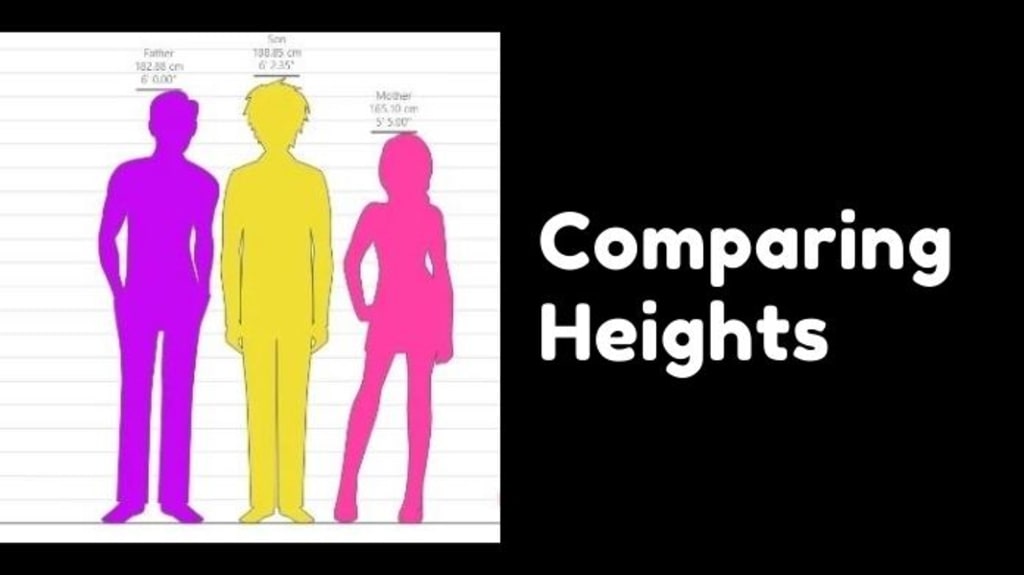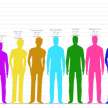Comparing Heights - Comparing Heights Visually With Chart
This article delves into the significance of height comparison, the factors influencing human stature, and how visual charts can enhance our understanding of height differences.

In human diversity, height is one of individuals' most observable and compared traits.
Comparing heights, mainly through visual representations like charts, offers a fascinating glimpse into the variations across different populations, genders, and age groups.
This article delves into the significance of height comparison, the factors influencing human stature, and how visual charts can enhance our understanding of height differences.
The Importance of Comparing Heights
Comparing heights serves several purposes beyond mere curiosity. It can be a tool for anthropologists to study human evolution, for health professionals to assess nutritional and health status, and for individuals to understand their physical development relative to peers or global averages.
Visual comparison, primarily through charts, makes these differences more understandable and engaging, providing clear, immediate insights into the presented data.
Factors Influencing Height
A complex interplay of genetics and environmental factors determines human height.
While genetics provides the framework for an individual's potential height, environmental influences such as nutrition, health conditions, and overall lifestyle play crucial roles in determining the actual stature.
1. Genetics: Genes inherited from parents are the primary determinants of height, explaining why members of the same family tend to have similar statures.
2. Nutrition: Adequate nutrition during childhood and adolescence is critical for reaching genetic height potential. Deficiencies in certain nutrients can lead to stunted growth.
3. Health Conditions: Chronic illnesses, hormonal imbalances, and other health issues can impact growth and development.
4. Lifestyle Factors: Physical activity, sleep patterns, and stress levels can also influence height.
The Role of Visual Charts in Height Comparison

Visual charts are an effective tool for comparing heights as they can represent data in a way that is easy to understand and analyze.
These charts can take various forms, including bar graphs, line graphs, and scatter plots, offering unique insights into height data.
Types of Height Comparison Charts
1. Bar Graphs: Ideal for comparing the average heights of different populations or groups. Each bar represents the average height of a group, making it easy to see variations across different demographics.
2. Line Graphs: Useful for showing height trends over time, such as changes in average height across generations within a population.
3. Scatter Plots: These can be used to depict the relationship between height and another variable, such as age or weight, highlighting patterns or correlations.
Benefits of Using Charts for Height Comparison
1. Clarity and Immediate Insight: Visual charts provide a clear and immediate understanding of height differences, making it easier to grasp complex data at a glance.
2. Pattern Recognition: Charts help identify patterns, trends, and outliers within the data, which might not be apparent from raw numbers alone.
3. Educational Value: For educational purposes, charts offer a visual method to teach students about human biology, genetics, and nutrition.
4. Engagement: Visual representations are more engaging than lists of numbers, encouraging more profound interest and exploration of the data.
Creating a Height Comparison Chart
Creating a height comparison chart involves the following:
- Collecting height data.
- Choosing the appropriate type of chart.
- Using software or online tools to visualize the information.
For instance, comparing the average heights of men and women across different countries would involve gathering reliable height statistics from each country and then plotting this data on a bar graph to visually represent the differences.
Applications of Height Comparison Charts
Height comparison charts have wide-ranging applications, from academic research to personal growth tracking.
In healthcare, they can help pediatricians to track a child's growth compared to national averages. In sports, coaches use them to assess the physical development of athletes.
Moreover, such charts are valuable educational classroom tools to teach about human biology and diversity.
Challenges and Considerations
While comparing heights with charts is insightful, it's essential to approach the data with sensitivity and awareness of its limitations.
Many factors influence height; comparisons should not lead to stereotyping or body shaming.
Additionally, the data's accuracy and the sample size's representativeness are crucial for making meaningful comparisons.
Conclusion
Comparing heights through visual charts offers an accessible and engaging way to explore the diversity of human stature.
Whether for scientific research, health assessment, or educational purposes, these charts provide valuable insights into the factors influencing height and the variations among different populations.
By visualizing height data, we can better appreciate the complex interplay of genetics and environment in shaping human growth and development.
As we continue to gather and analyze height data from around the world, visual charts will remain an indispensable tool in our quest to understand the rich tapestry of human diversity.
About the Creator
Height Comparison
An online height comparison tool is a web-based application or tool that allows users to compare the heights of individuals, objects, or elements.
Enjoyed the story? Support the Creator.
Subscribe for free to receive all their stories in your feed. You could also pledge your support or give them a one-off tip, letting them know you appreciate their work.






Comments
There are no comments for this story
Be the first to respond and start the conversation.